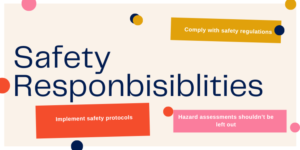Vital steps in preparation for an industrial emergency.
First things first, the fact of the matter is that there are great benefits to be had when there is guidance and ample preparation in cases of an emergency.
Planning and preparation helps industries and corporation discover any hazardous problems or conditions that could be unrecognized and if not paid attention to could possibly aggravate a situation.
When there is preparation, deficiencies are immediately brought to light. Some of these deficiencies could include resource-lack (e.g. lack of personnel that are adequately trained, lack of supplies, lack of equipment, to name a few).
Knowing these details beforehand helps correct any lack in the soonest possible time. It also prevents major losses and casualties as well as financial organizational collapse. Another advantage of preparing for an industrial emergency is that it helps promote appropriate safety and awareness among the workers as well as present a company that is concerned with the welfare of all its staff.
The following are some of the needed steps designed to assist industrial plants as well as businesses in preparing for any type of emergency. Establish a team As much as possible, set-up a good planning team. A leader as well as a staff must be chosen as based on their appropriate capabilities and skills. Particular tasks should also be assigned to teams or individuals. Analyze hazards and capabilities It is also important to assess the preparations the industrial plant or the organization currently has against risks such as power failure, damage in structures, among others.
In an emergency such as flooding, contacting the manager of the local floodplain as well as other flood officials helps organization and industries learn the risks involved.
Using building materials that are flood-resistant, erecting a physical barrier as well as anchoring structures and tanks is one of the ways to prepare in advance for flood emergencies. Meanwhile, preparing against high winds is by reinforcing the roof as well as the side panels.
Covering windows is also important, covering the doors and removing any objects that are loose from the industrial plants site is a must.
Have a backup As much as possible, have a backup emergency power such as a battery storage, power and heat system combined. It is also vital that contact utility info be obtained in case of a power outage.
The plan should be developed It is important that there is a plan developed during, before as well as after a particular emergency.
Protocols should be established for the welfare of the employees, especially their safety and similarly the readiness of the site. Emergency power should also be updated as well as the options for power supply.
Communication emergency systems must also be established. Responsibilities for each staff with regards to the recovery, shutdown and restart procedure should be outlined. An evacuation plan should also be developed including employee support. Procedures on shutting down the utility and the safe processing of operations is a necessity.
Methods in protecting records, inventory and materials must also be developed. Plan implementation Staying in touch with the operations emergency center on your own state is important. In this stage, the appropriate preparation, shutdown, emergency backup and evacuation should be started. All in all, the final stage is the recovery process and the assessment of the damages brought by the emergency as well as in prioritizing needed repairs. Hopefully, the procedures above helps in the adequate preparation of industries and Organizations




